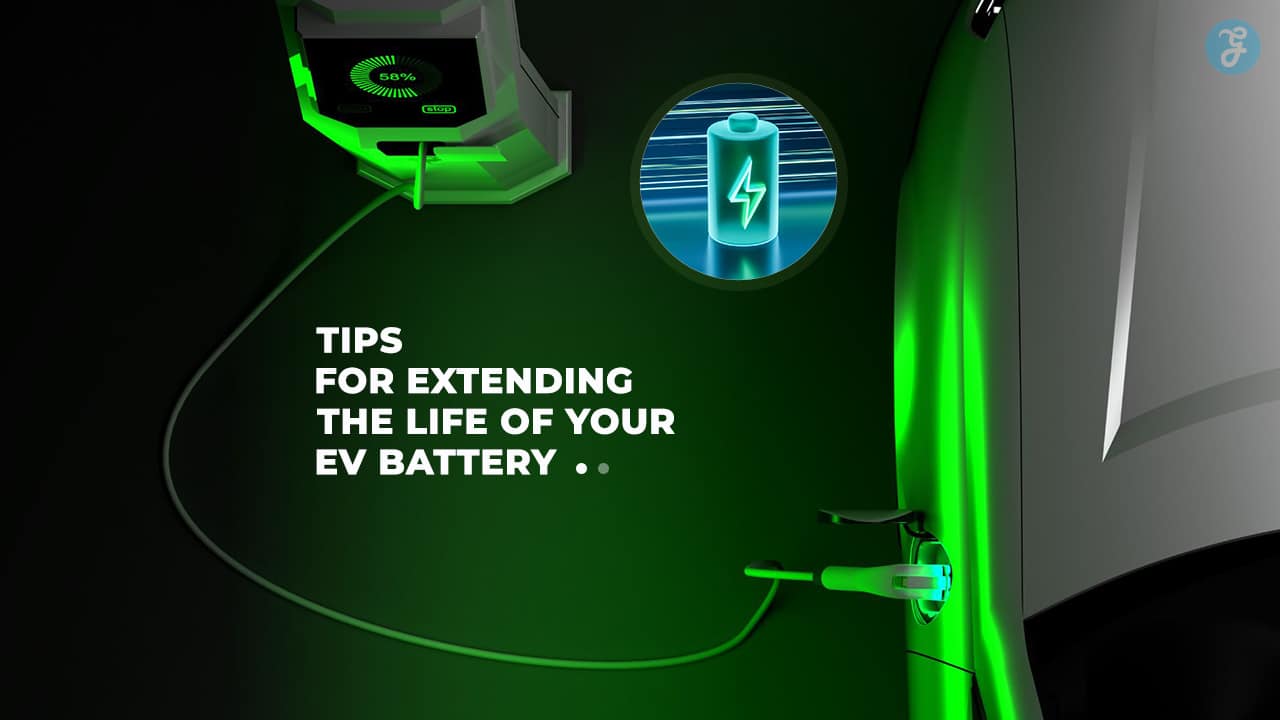Electric vehicles (EVs) have revolutionized the way we approach transportation, offering an eco-friendly and cost-efficient alternative to traditional gas-powered cars. At the heart of every EV is its battery—a component that determines both the car’s range and overall lifespan.
To get the most out of your investment, learning how to extend the life of your EV battery is crucial. By adopting smart charging habits, managing driving patterns, and maintaining the battery’s health, you can enhance its longevity and performance.
This guide provides practical strategies, backed by research and expert insights, to help you ensure your EV battery remains in peak condition for years to come. We’ve also included tables, examples, and current trends to make the information more accessible and actionable.
Understanding the Basics of EV Battery Care
How Do EV Batteries Work?
EV batteries, typically made of lithium-ion cells, store and supply the energy that powers your vehicle. These batteries undergo charging and discharging cycles, and their performance depends on factors like temperature, charging habits, and usage patterns. Their design includes multiple cells working together to provide the necessary voltage and capacity to propel an EV.
| Key Features of EV Batteries | Details |
| Battery Type | Lithium-ion |
| Typical Lifespan | 8-15 years |
| Charging Cycles | 1,000-1,500 cycles |
| Key Factors Affecting Longevity | Temperature, charging habits, driving style |
Why Battery Longevity Matters for EV Owners
Extending the life of your EV battery can save you thousands of dollars in replacement costs. It also reduces your environmental footprint by minimizing waste and ensuring sustainable usage.
A well-maintained battery enhances the resale value of your EV, providing long-term economic and environmental benefits. For instance, a 2022 report by Bloomberg New Energy Finance highlights that battery maintenance can improve overall vehicle efficiency by up to 15% annually.
8 Proven Tips to Prolong Your EV Battery Life
1. Avoid Frequent Fast Charging
Fast charging is convenient but can strain the battery cells by generating excessive heat. Over time, this stress reduces the battery’s overall capacity. While occasional use of fast charging stations is unavoidable, relying on them regularly can accelerate degradation.
| Pros and Cons of Fast Charging | Details |
| Pros | Convenient for long trips, quick top-ups |
| Cons | Generates heat, reduces lifespan over time |
Example: A study by the Idaho National Laboratory found that EV batteries subjected to frequent fast charging retained 20% less capacity after five years compared to those primarily charged at home.
Actionable Tip: Use Level 1 or Level 2 chargers for regular use and reserve fast charging for emergencies or long trips.
2. Maintain an Optimal State of Charge
Keeping your battery’s charge level within an ideal range helps preserve its health. For most EVs, this range is between 20% and 80%. Regularly charging to 100% or letting the charge drop below 10% can stress the cells and reduce efficiency.
| Best Practices for Charging | Recommendations |
| Daily Commutes | Charge to 80% |
| Long Trips | Charge to 100%, but only when necessary |
| Storage | Maintain a charge level of 50%-60% |
Example: A Nissan Leaf owner reported that maintaining a charge between 30% and 80% helped retain over 90% of the battery’s capacity after seven years.
Actionable Tip: Invest in a smart charger to schedule and monitor charging sessions effectively.
3. Regulate Temperature Exposure
Extreme temperatures, whether hot or cold, can negatively impact battery performance and lifespan. Lithium-ion batteries are particularly sensitive to heat, which accelerates chemical reactions that degrade cell integrity.
- Heat management: Park in shaded or covered areas during hot weather. Utilize sunshades and thermal covers if necessary.
- Cold weather tips: Use pre-conditioning features to warm up your battery before driving in freezing temperatures. Avoid charging immediately after driving in extreme cold.
| Temperature Impact on EV Batteries | Recommended Action |
| Above 35°C (95°F) | Park in shaded areas, avoid fast charging |
| Below -10°C (14°F) | Pre-condition the battery, charge indoors |
Real-Life Insight: In colder regions, Tesla owners have found significant benefits in using the car’s scheduled pre-conditioning to optimize range during winter months.
Actionable Tip: Consider investing in a garage or insulated parking space for better thermal control.
4. Drive Smoothly to Reduce Battery Strain
Aggressive driving habits, such as rapid acceleration and hard braking, consume more energy and stress the battery. This not only reduces your range but also shortens the battery’s lifespan.
| Driving Style | Effect on Battery |
| Aggressive (rapid acceleration) | Higher energy consumption, more heat |
| Smooth (consistent speed) | Optimized energy usage, less stress |
Example: Studies show that using eco-driving modes in EVs can increase range by up to 10%.
Actionable Tip: Use regenerative braking to recover energy and extend your battery’s charge.
5. Update Your EV Software Regularly
EV manufacturers release software updates that often include enhancements to battery management systems. These updates can optimize energy consumption and improve thermal management features.
Case Study: In 2023, Tesla released a firmware update that improved the Model 3’s range by 5% by optimizing battery management algorithms.
| Benefits of Software Updates | Details |
| Enhanced Efficiency | Improves energy use during driving |
| Thermal Management Improvements | Better regulation of battery temperature |
| Increased Range | Unlocks additional capacity |
Actionable Tip: Enable automatic updates in your EV’s settings to ensure you’re always up to date.
6. Limit Heavy Load and Towing Activities
Excessive weight puts additional strain on the battery, reducing its efficiency and increasing wear. While EVs are capable of towing, frequent heavy-load activities can lead to faster degradation.
| Activity | Battery Impact |
| Towing (within limit) | Minimal impact if infrequent |
| Overloading | Increased energy consumption, heat |
Example: A Rivian R1T owner reported a 30% drop in range while towing a 5,000-pound trailer on a long trip.
Actionable Tip: Remove unnecessary items from your vehicle to reduce weight and improve efficiency.
7. Use the Manufacturer’s Recommended Charger
Using the charger recommended by your EV’s manufacturer ensures compatibility and optimal charging efficiency. Unverified third-party chargers can overheat or deliver inconsistent power, which can damage the battery.
| Charger Type | Recommendation |
| OEM Charger | Always preferred |
| Certified Third-Party Chargers | Use only if verified by the manufacturer |
Example: Chevrolet Bolt owners who used OEM chargers consistently reported fewer charging issues than those using uncertified alternatives.
Actionable Tip: Always inspect charging cables for wear and tear to avoid power inconsistencies.
8. Plan Charging Stops Strategically
Planning when and where to charge can reduce unnecessary strain on your battery. For instance, charging only when the battery level is low (but not critically low) helps avoid overcharging or excessive heat generation.
| Charging Strategy | Benefits |
| Charge during off-peak hours | Lower energy costs, reduced grid stress |
| Avoid frequent top-ups | Prevents overcharging and heat buildup |
Real-Time Tip: Use apps like PlugShare or ChargePoint to find optimal charging stations on long routes.
Actionable Tip: Avoid charging to 100% before storing your EV for extended periods.
Common Mistakes to Avoid with EV Battery Maintenance
Ignoring Software Alerts and Diagnostics
Ignoring warnings from your EV’s battery management system can lead to preventable damage. Always address alerts promptly to avoid long-term issues.
Using Low-Quality Charging Cables
Invest in high-quality, certified charging cables to avoid inconsistent power delivery that can harm the battery. Poor-quality cables can lead to overheating and inefficient charging.
Skipping Regular Maintenance Checks
Routine maintenance ensures that the battery management system and charging components are functioning optimally. Regular checks can also identify potential issues before they escalate.
Battery Care Checklist
| Do’s | Don’ts |
| Maintain optimal charge | Overcharge frequently |
| Use the OEM charger | Expose to extreme heat |
| Update EV software | Ignore diagnostics alerts |
| Park in shaded areas | Let the battery drain completely |
Takeaway: Maximizing the Longevity of Your EV Battery
Extending the life of your EV battery is a combination of smart habits and proactive maintenance. By avoiding frequent fast charging, maintaining optimal charge levels, and protecting your battery from extreme conditions, you can ensure its longevity and efficiency.
Incorporate these tips into your daily routine to get the most out of your EV while contributing to a sustainable future.
Take control of your EV’s battery health today and enjoy the benefits of a reliable, long-lasting electric vehicle. For more expert tips and resources, visit Editorialge.






































